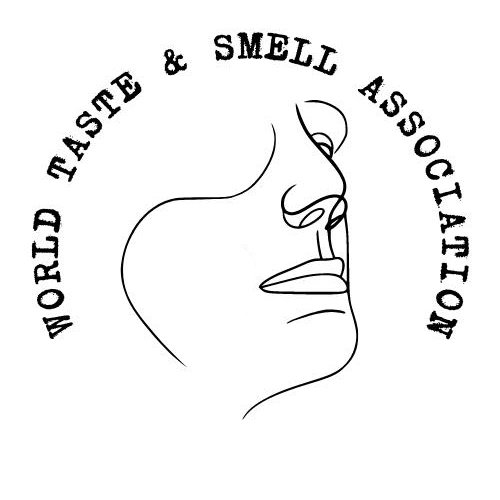The Mechanism of Hypoarousal and Depression: A Neurosensory Perspective
By Mindy Yang
In the intricate web of human emotions and cognition, arousal levels play a pivotal role in shaping our perception, behavior, and overall mental health. While much attention is given to hyperarousal — characterized by heightened stress, anxiety, and fight-or-flight responses — hypoarousal remains an underexplored yet critical component in the landscape of depression and mental health disorders.
From a neuroscientific and sensory perspective, hypoarousal is a state of diminished physiological and psychological activation. It is often linked to depressive disorders, dissociation, and even trauma-related conditions, where the body and mind retreat into a low-energy state as a survival mechanism. Unlike the hyperactive, anxious distress often associated with depression, hypoarousal presents as lethargy, emotional numbness, and cognitive slowing — what many describe as feeling “shut down” or “disconnected.”
The Neurological Basis of Hypoarousal
At its core, hypoarousal is regulated by the autonomic nervous system (ANS), specifically the dorsal vagal complex of the parasympathetic nervous system. This pathway, as described in Stephen Porges’ Polyvagal Theory, is responsible for the body’s freeze response, an ancient evolutionary mechanism designed to promote survival when neither fight nor flight is possible. When the nervous system perceives overwhelming stress or defeat, it may default to a state of withdrawal, leading to physiological slowing and a detachment from both external stimuli and internal emotional states.
This response is mediated by neurotransmitter imbalances, particularly involving:
• Serotonin (5-HT): Deficiencies contribute to mood dysregulation, apathy, and an inability to feel pleasure (anhedonia).
• Dopamine (DA): Reduced dopamine activity dampens motivation, reward processing, and energy levels, making engagement with life feel effortful.
• Norepinephrine (NE): Low norepinephrine levels lead to fatigue, poor attention, and reduced physiological activation, compounding the lack of drive.
• GABA & Glutamate: A disrupted balance between these inhibitory and excitatory neurotransmitters further influences cognitive dullness and emotional detachment.
Additionally, hypoarousal has a direct impact on the sensory systems, particularly retronasal olfaction, taste perception, and interoception (our ability to perceive internal bodily states). These changes often manifest in individuals with depression who report diminished sensory pleasure — food becomes tasteless, scents feel muted, and even physical touch lacks vibrancy.
Hypoarousal, Depression, and the Default Mode Network (DMN)
Recent research highlights the role of the default mode network (DMN) — a network of brain regions active during introspection and self-referential thinking. In hypoaroused states, the DMN becomes dysregulated, contributing to rumination, self-critical thoughts, and a sense of emotional stagnation. Rather than engaging in dynamic, externally focused cognitive processing, individuals experiencing hypoarousal may feel trapped in an internal fog of negative self-perception.
Functional MRI (fMRI) studies have shown that decreased connectivity between the prefrontal cortex and limbic regions (such as the amygdala and hippocampus) plays a key role in blunting emotional responsiveness. This not only affects mood but also impairs the ability to experience motivation, spontaneity, or a sense of aliveness — hallmarks of depersonalization and emotional detachment.
The Sensory Dimension: Why Hypoarousal Feels Like “Numbness”
From a sensory perspective, hypoarousal is akin to a dimming of the body’s perceptual input. This can be understood through:
• Olfactory Dulling: Reduced engagement with scent can limit emotional recall and pleasure, as the olfactory bulb is tightly linked to the limbic system.
• Gustatory Apathy: Changes in neurotransmitter levels impact how taste is perceived, often leading to reduced appetite or food feeling unappealing.
• Somatosensory Disconnection: Many individuals in hypoaroused states report a diminished awareness of bodily sensations, which can lead to lethargy, poor proprioception, and even psychosomatic pain.
Breaking the Cycle: Reawakening Through Sensory and Neuromodulatory Approaches
Because hypoarousal manifests as a physiological shutdown, the key to recovery lies in gradual reactivation — both mentally and physically. Approaches to counteract this include:
1. Sensory Stimulation & Aromachology: Engaging in active olfactory exercises — such as inhaling stimulating scents like citrus, mint, or spices — can help re-engage the limbic system and promote alertness.
2. Tactile & Movement-Based Therapies: Practices like somatic therapy, yoga, or sensory immersion (cold exposure, weighted blankets, rhythmic tapping) can signal safety to the nervous system and promote reconnection with bodily sensations.
3. Neuromodulation Techniques: Non-invasive brain stimulation, such as transcranial magnetic stimulation (TMS) or vagus nerve stimulation (VNS), has shown promise in restoring autonomic balance and improving mood regulation.
4. Microdosing & Adaptogens: Emerging research explores how low doses of psilocybin, ketamine, and natural adaptogens (e.g., Rhodiola, Ashwagandha) can enhance neuroplasticity, reset neural pathways, and promote resilience.
5. Retronasal Reawakening: Since retronasal olfaction directly influences emotional memory and pleasure perception, incorporating flavor-forward foods and mindful eating can help restore sensory engagement.
Reframing Hypoarousal as an Adaptive Response
Rather than viewing hypoarousal solely as a dysfunction, it’s crucial to recognize it as an adaptive response to chronic stress, trauma, or nervous system dysregulation. The body is not failing — it is protecting. The challenge lies in reestablishing a sense of safety, sensory engagement, and vitality without overwhelming the system.
By understanding hypoarousal through the lens of neuromodulation, sensory science, and somatic awareness, we can develop more effective, holistic strategies to revitalize perception, restore motivation, and reconnect with the world.
From Numbness to Awakening
Depression and hypoarousal do not indicate an absence of life; rather, they signal a temporary state of disconnection. The path forward is not about forcing activation but gently reintroducing the brain and body to the richness of sensation, movement, and engagement. By harnessing the power of sensory neuroscience, olfaction, and neuroplasticity, we can turn hypoarousal from a state of withdrawal into an opportunity for renewal.
References & Further Reading:
• Porges, S. W. The Polyvagal Theory (2011)
• Rolls, E. T. “Olfaction, Emotion, and Memory.” Trends in Cognitive Sciences (2019)

